The Naturehike Cloud Up Pro 1 Person Tent is lightweight and compact enough to be carried in the backpack instead of a bivy tent, and this is the reason I bought it. Read more in the text.
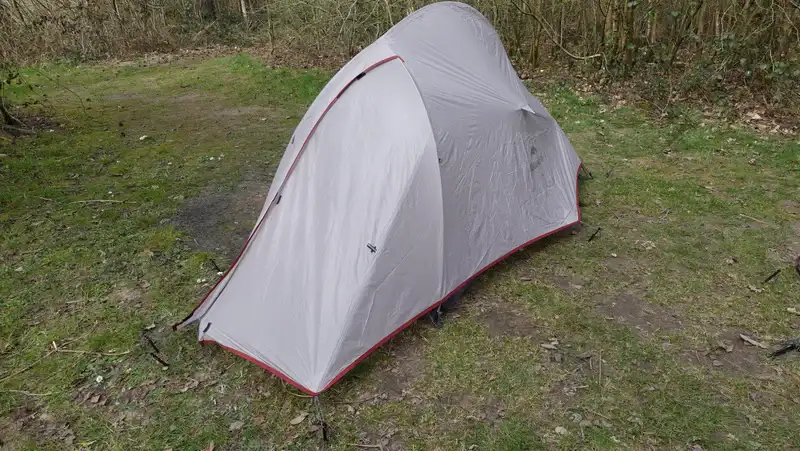
Key features & benefits
- Lightweight.
- Two-layer tent.
- One door and one vestibule.
- Footprint included.
- Sil-nylon fabric.
- Single aluminum pole with two hub elements.
- Semi-freestanding.
- Incredible price.
My reasons for buying the Naturehike Cloud Up Pro 1 Person Tent
Here are my 5 reasons, perhaps they might resonate with you:
1. I wanted a lightweight, backpack-portable tent. Guess what, this tent weighs below 1.6 kg (3.5 lb) together with the included footprint.
This makes it a few grams lighter than my old Ferrino Lightent 1 tent which is a bivy tent with far less volume inside.
2. But I did not want to spend much, and the price tag of this tent was simply incredible, 111 Euro (around $120), and it comes with a footprint.
3. I needed a tent high enough to sit inside during long intervals with rain. For the same situations, such a tent will allow me to pack my sleeping equipment inside the tent. This is practically impossible in a bivy tent.
4. When it rains you cannot cook outside, so I needed a tent with enough space to cook inside, preferably with a vestibule. So I have it with this tent.
5. I need a tent for high elevations, typically in the range 2000-3000 meters. These are elevations at which I sleep in the tent when I am not close to the car.
This implies a cool climate even in summer. Therefore, the tent must be fully closable and with a full fly. The Naturehike Cloud Up Pro offers all this. It is double-layer, with enough mesh on the canopy but also with taffeta in a big part, plus a full fly.
So these are my main reasons. In addition, I wanted a tent that would blend into environment regarding the color. This is why I ordered the light-gray variant which you can see here in the pictures. It will work well in areas with rocks around, perfect for stealth overnighting.
But to know, they offer it in several colors including two green variants, this will work better if you stay in the forested and green areas.
Overview of features
Regarding the shape the tent cannot be put in any particular group, you will see the poles structure below. But this is a double-layer shelter that includes an inner tent with a bath-tub floor, and the canopy which is a combination of taffeta and mesh:
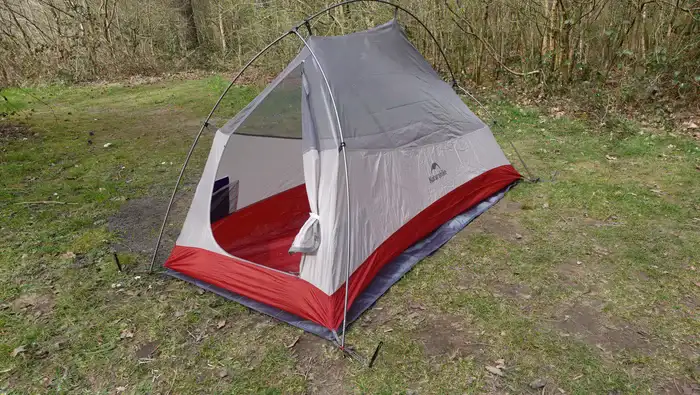
If you are familiar with the famous Big Agnes Fly Creek UL1 tent, you will realize that they are of a very similar shape. Though, the Big Agnes tent costs almost three times more and it is one pound lighter.
Note that the inner tent is completely freestanding and self-supporting. The door is of a reasonable height for such a tent, and it is on the narrow side of the tent.
This all is covered by a massive fly that creates a vestibule on the front. The vestibule is around 60 cm long and narrow, and the flap is with a zipper that allows it to roll to the side and to fix with a toggle and lop.
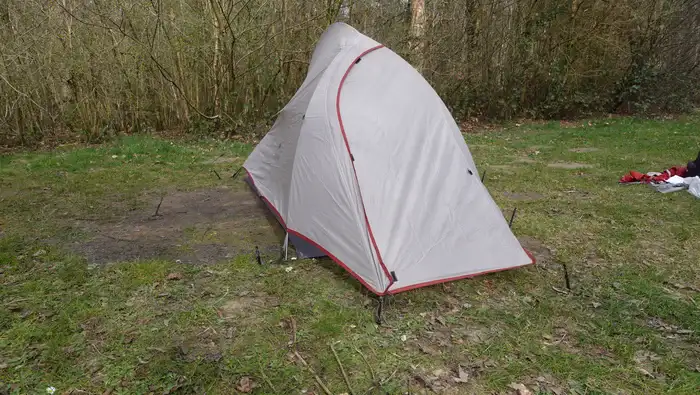
The side view below reveals that the vestibule is angled and quite low, it may be difficult to cook there when it rains. I am yet to test this, and it will be reported later.
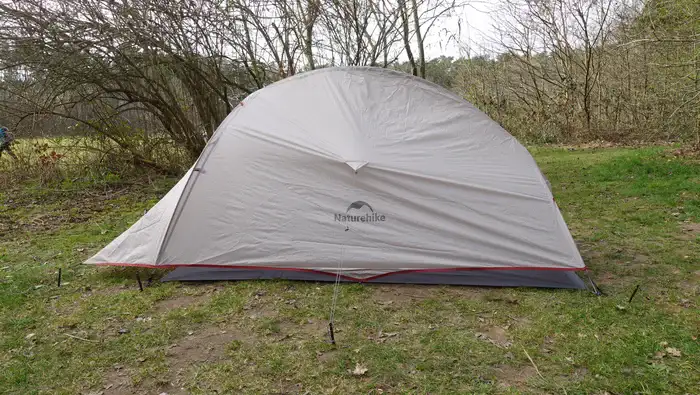
Materials
All the elements in the package are shown in the picture:
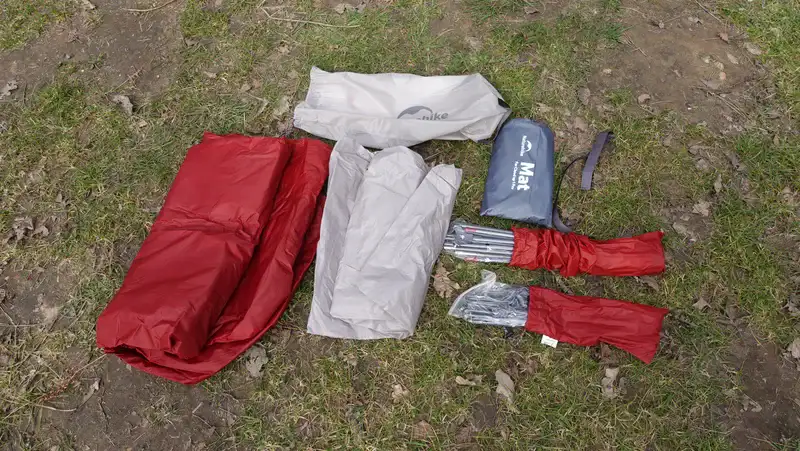
The pole: This is a single shock-corded 7075 aluminum alloy pole with two hub elements. Below you can see how it attaches to the grommets of the footprint.
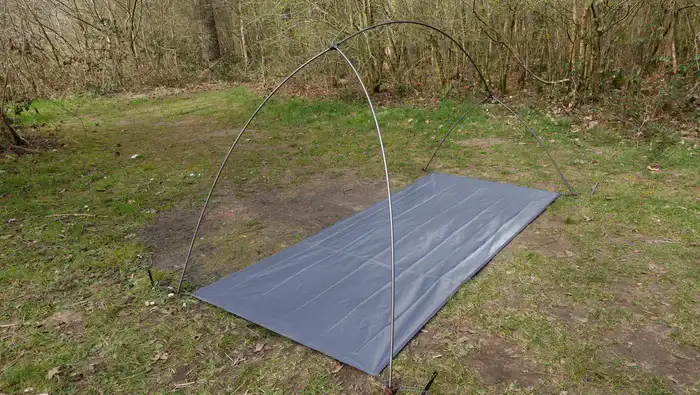
This makes setup easy and there is nothing really to guess. In the video below you can see me setting it up for the first time without even having a look at the instructions. But just to know, you have instructions sewn-in in the carry bag.
Below you can see the front hub element, and one of the clips that attach the inner tent to the frame.
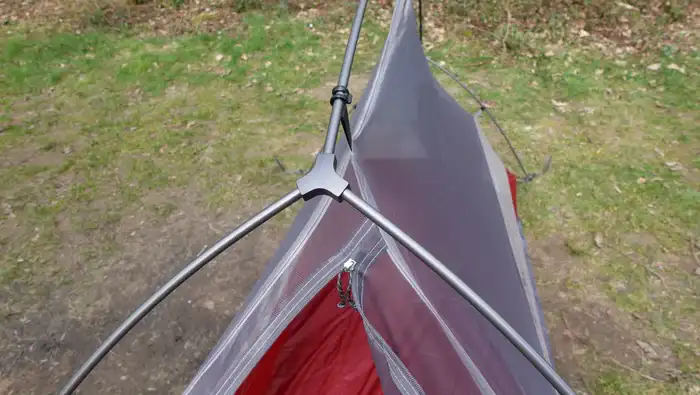
There are 14 aluminum alloy stakes in the package, you can see how they look.
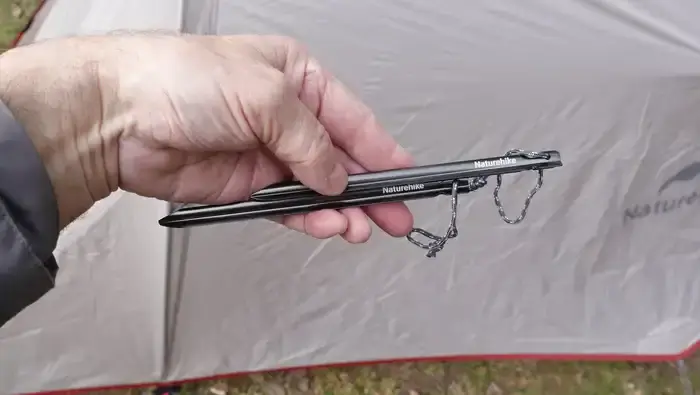
The fabric: I read different statements at different places, but this may be due to the fact that they make the tent from polyester and from nylon. My nylon variant is 20D, so it looks thin but strong.
However, on Amazon-US they have 15D and 20D options, but at the same place even 10D is mentioned. This is a silicone coated nylon in two different colors, and it feels slippery.
For polyester version you have a 210T fabric in two colors, and this is a PU coated material.
Waterproof rating of my tent is 3000 mm, but on Amazon you will see also 4000 mm mentioned. In any case it is impressive. Below you have the view inside:
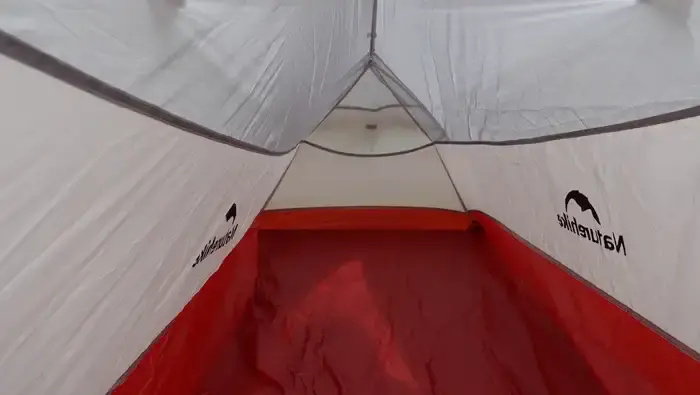
Other details
- There are two large pockets on the sides close to the door, the pictures below.
- The zippers are with quiet pull loops, and from my experience so far they are smooth and work well.
- One hook for a lamp is on the ceiling.
Ventilation
The inner canopy contains a lot of mesh so vapor can escape. The fly is with a low positioned rear vent (the picture below) with a support bar, so you can open it or close to regulate air flow.

They have added a front vent as well, it is at the upper part of the vestibule zipper, and here too you have a support bar. In combination with the rear vent you can regulate cross flow.
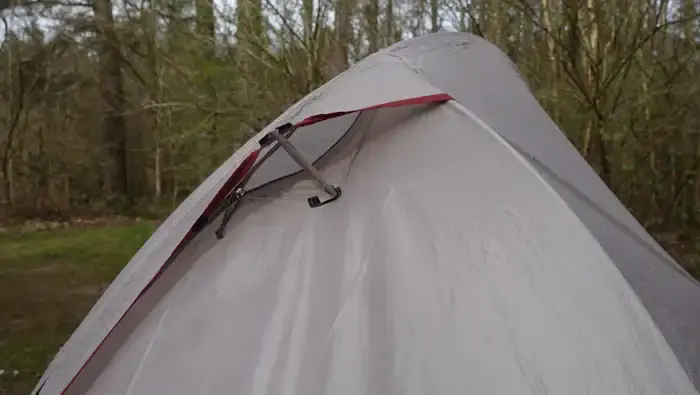
The fly can be staked so that you have at least 10-15 cm of clearance from the ground, but if you feel cold you can reduce this gap. You can see this in pictures above.
I would say that this is all properly done and there is nothing really to object here.
Fast fly variant
Having the footprint included allows for a fast-fly variant where you have full rain protection. You use the footprint as a mat to separate you from the ground, together with the pole and the fly. Below you see how this looks:

In my measurement, these three elements together with the complete guylines and stakes weight exactly 1 kg, so this is an ultralight option.
Please see more in this video:
Who is the Naturehike Cloud Up Pro 1 tent for
Regarding weight, the tent is lightweight and suitable for backpacking. Without the footprint it weighs only 3.09 lb (1403 g).
In the fast fly option you can use the shelter on the beach. But you can do the same also for ultralight backpacking if you are not concerned about insects.
When packed, it is reasonably compact, the number are in the specifications below. The carry bag is with a cinch cord on one end, and with a carry loop on the other end, see the picture. And yes, the footprint in the photo fits in the carry bag easily.
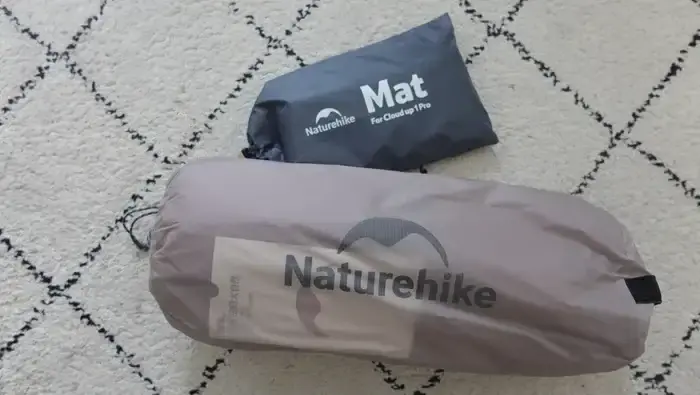
When you roll the tent, you have a compression strap, the picture below, so it is always easy to store it back in the carry bag.
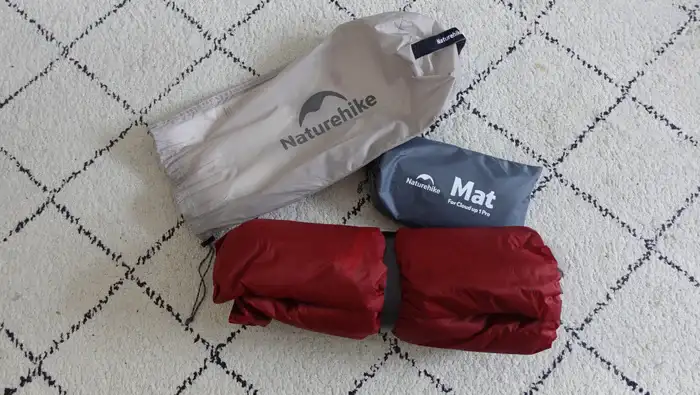
Regarding climate, I bought it for a cooler environment and I think this is its best use.
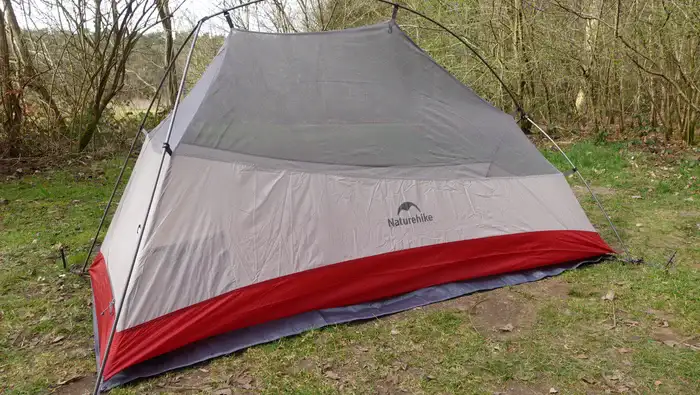
In a hot climate, perhaps some users might think that it has a bit too much taffeta on the inner tent, see it in the picture above.
But you have seen about its vents, and from the picture below it is obvious that air flow from the ground can be regulated. When it is cold, this clearance can be reduced.
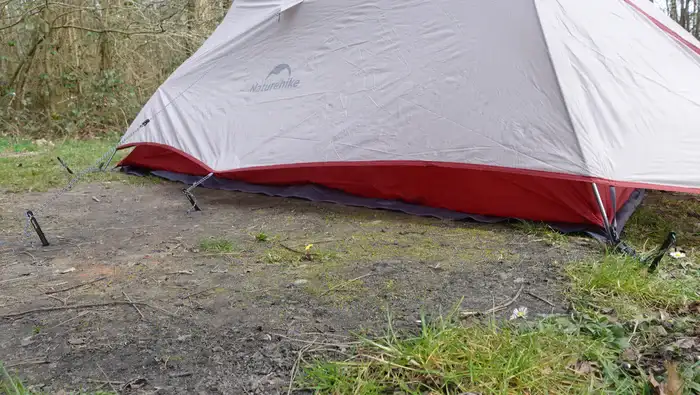
The tent is low profile and narrow, so in windy places it is best to turn its back or front in the direction of wind. I plan to test it in the Alps in a few months, and you will have a report about it.
Waterproof rating is impressive, and this is more than enough for practically any environment. But my real rain test is yet to come, so stay tuned.
Regarding the size, obviously, this is a solo tent, but they also have a two-person version at Naturehike and at Amazon, just to know.
Below you can see the official dimensions, but I must say that they differ from my own measurements (the numbers are in the specifications below).
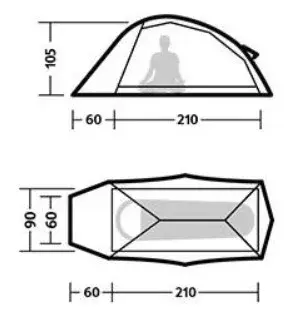
Regarding the price, it is simply incredible, you have already seen about this in the text above, but check the links below for updates.
Specifications (my own measurements)
- Weight without footprint: 3.09 lb (1403 g).
- Footprint weight: 6.8 oz (194 g).
- Fast fly weight: 2.2 lb (1000 g).
- Inner floor dimensions (L x W): 77 x 31.5 in (195 x 80 cm).
- Vestibule area: 4.8 ft² (0.45 m²).
- Inner peak height: 37.4 in (95 cm).
- Packed size (L x D): 15.3 x 5.1 in (39 x 13 cm).
Final thoughts & rating
In summary, the Naturehike Cloud Up Pro 1 Person Tent won me over with its unbeatable combination of lightweight design, affordability, and practical features for solo backpacking.
Whether it’s the sub-1.6 kg weight with a footprint, the spacious interior for rainy days, or the versatility for high-altitude adventures, this tent checks all the boxes for my needs.
While it is not perfect, taller campers might crave more headroom, it is hard to argue with the value at just 111 Euro. I am excited to put it through its paces in the Alps and will update you with my real-world experience.
For now, it is a stellar choice for anyone seeking a reliable, budget-friendly shelter that doesn’t weigh them down, literally or figuratively.
Below you can see how I rate it against my usual rating criteria so that you can easily compare it with other items of this type:
BEST PLACEs TO BUY
For more options, please check under the category Solo Tents.
Subscribe to my weekly newsletter, this will keep you informed because I add texts here regularly. Let me know if you have questions or comments, there is a comment box below. Have a nice day.


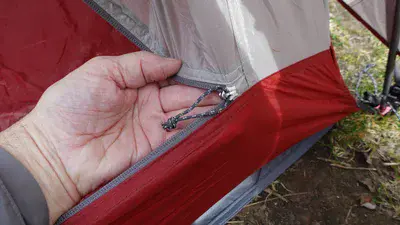
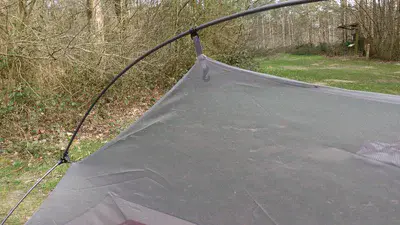

Asli Sade says
Hello,
I really wonder if you could try cooking inside when it is raining. For cloud up 1
Jovo says
Hi, recently I was with it on Antelao mountain in the Dolomites (there will be a report about the tour in the site), and I did cooking inside, not in the vestibule. The vestibule is simply too low, not safe to put the stove there.